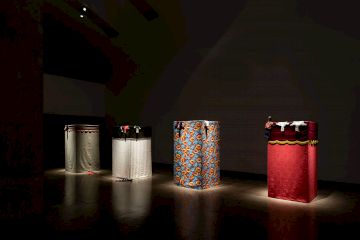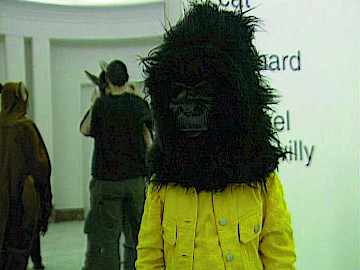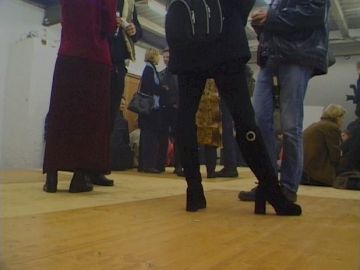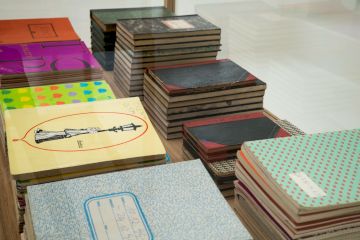How much history do images contain? Peter Friedl’s Bilbao Song (2010) deals with the political historicity of images, exploring and conjuring up their narrative potential in a paradoxical form that takes the shape of a documentary allegory. Bilbao Song was filmed on the empty stage of the Serantes Theatre in Santurtzi, near Bilbao. In static tableaux vivants staged for the camera, Friedl’s film captures the process of a phantasmagorical picture production, in this case inspired by Basque history. The cast includes professional and non-professional actors, and special guests, such as Julen Madariaga (lawyer, politician, former co-founder of ETA) or the popular clown duo Pirritx and Porrotx. Friedl’s tableaux vivants start with a reenactment of the painting Henry IV Receiving the Spanish Ambassador (1817) by Jean-Auguste-Dominique Ingres. Other references to Basque history are El paria castellano by Juan de Echevarría (The Castilian Pariah, 1917), El orden by Gustavo de Maeztu (Order, 1918–19), the Tríptico de la Guerra by Aurelio Arteta (War Triptych, 1937), and Soldado y Mulata by Víctor Patricio Landaluze (Soldier and Mulatta, ca. 1870), who was born in Bilbao and emigrated to Cuba in 1850. The only action that takes place on the stage is a live interpretation of Kurt Weill’s “Bilbao Song,” excluding the text written by Bertolt Brecht for their unsuccessful musical comedy Happy End.
Bilbao Song, 2010
Video installation












Single-channel video installation, color, sound
5:53 min., aspect ratio 16:9, loop
Edition of 4 + 2 AP
Peter Friedl


































Peter Friedl is a classic of contemporary art. The three-time documenta participant, born in 1960, can be considered a notorious participant in discourse - because his work has always understood how to address major themes in such a way that they found and find new forms away from the canon and mainstream. Forms that run counter to power and domination, subvert them, escape them.... and confront them in the process. Friedl takes away from history - for example colonialism or modernity, its paradigms and institutions - the power to define what is connected and how, and with an almost innocent-seeming aesthetic he tells a different story about humans and historical actions than we are used to and may find opportune. Peter Friedl provokes that which dominates us, including our own thinking. Throughout the years he his work has been displayed in meaningful solo exhibitions, most recently Teatro Popular (KOW Berlin, 2023), Report 1964-2022 (KW Berlin 2022) and No Prey, No Pay (Guido Costa Projects Turin, 2021) and major group exhibitions such as Life, Without Buildings, Gta exhibitions (ETH Zurich 2022), Das Auto rosi aber (KOW Berlin 2022) and Komunikazion - Inkomunikazio (Tabakalera, Centre for Contemporary Art, San Sebastian 2021).
- Anna Boghiguian
- Candice Breitz
- Marco A. Castillo
- CATPC
- Alice Creischer
- Chto Delat
- Clegg & Guttmann
- Eugenio Dittborn
- Heinrich Dunst
- Anna Ehrenstein
- Peter Friedl
- Sophie Gogl
- Barbara Hammer
- Ramon Haze
- Hiwa K
- Hudinilson Jr.
- Simon Lehner
- Renzo Martens
- Oswald Oberhuber
- Mario Pfeifer
- Dierk Schmidt
- Santiago Sierra
- Michael E. Smith
- Franz Erhard Walther
- Clemens von Wedemeyer
- Tobias Zielony